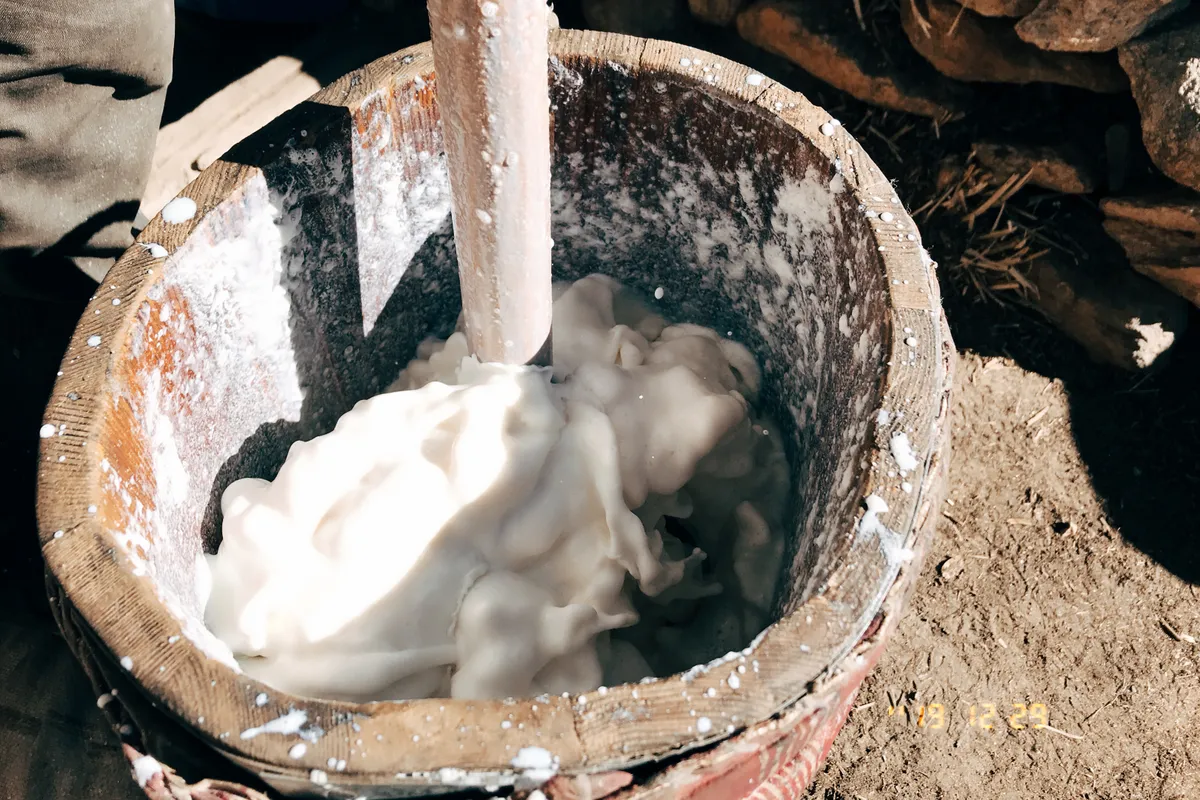For ancient humans looking for a new home, a dietary change made a move to the Tibetan highlands possible.
A recent study now shows that dairy consumption was crucial to the survival of ancient humans in one of the world’s most inhospitable environments at least 3,500 years ago.
Using a new method that can locate milk proteins in the dental remains of ancient skeletons, archaeologists at the Max Planck Institute of Geoanthropology were searching for the prevalence of milk consumption on the highland Tibetan Plateau.
The results surprised the researchers. Examining 40 individuals across 15 sites in the plateau, every skeleton that belonged to milk drinkers had been recovered from sites sitting over 3,700 metres above sea level – with the highest dairy consumer found at a dizzying altitude of 4,654 metres. These sites are places where crop growing is difficult, in the northern and western part of the vast plateau.
On the other hand, no milk drinkers were found in the southern areas of the plateau where land is more farmable. These results follow an “incredibly clear pattern,” says lead author Li Tang.
The adoption of a dairy diet complemented existing evolutionary adaptations of early Tibetans to high altitudes, making it possible for individuals to occupy the highlands of the Tibetan Plateau – which are so harsh and resource-poor they are often known as the ‘third pole’.
Grazing animals could now “convert the energy locked in alpine pastures into nutritional milk and meat” that allowed the Tibetan pastoralists to thrive, says Tang.
The study, published in the journal Science Advances, used a new tool called palaeoproteomics to obtain this evidence. Previously, archaeologists have had to rely on analysis of animal remains and food containers – which provided limited direct evidence of milk consumption.
Palaeoproteomics instead facilitates analysis of ancient tissues – including bones and teeth to skin and hair – and in this study was used to examine the dental calculus (hardened dental plaque) of the 40 ancient individuals.

The tool provided extraordinarily detailed evidence – not just showing which individuals consumed milk and which did not, but also the animal species that the milk had come from. The dairy products were traced back to goats and sheep, with some evidence indicating cattle and yak too.
Tang told BBC Science Focus that the team behind the study is also in the process of analysing plant proteins in the dental calculus to learn what else formed the diet of individuals living on the plateau.
A far cry from the bizarre use of milk as a symbol of white superiority, the results of this study form another buttress against arguments that western humans have a better natural tolerance for dairy.
These findings follow a paper published in Nature in July 2022 that countered previously-held beliefs that a gene mutation in the DNA of ancient humans extending lactose tolerance into adulthood (beyond the usual cut-off point at around five years old) was the cause of widespread increases in milk drinking.
In fact, by the time this gene mutation became common, people had already been drinking milk for over 9,000 years – which wasn’t a problem until there were famines or infections. Being malnourished or sick meant the diarrhoea that lactose intolerant people suffered became fatal, while those with the lactase persistent gene mutation were able to survive.
Nowadays most Europeans are lactase persistent, as are many populations around the world with ancestral dairy pastoralism. The Max Planck researchers have not yet observed clear links between lactase persistence and milk consumption in ancient Tibetan individuals – according to Tang, "further research is still needed to explain the mysteries of milk digestion in ancient Tibetans". However, dairy continues to play a vital role in the diets and lives of modern Tibetans, particularly for mobile pastoralists.
"This is a very neat study that clearly demonstrates human ingenuity in using technology — in this case, dairying — into ways to survive in new environments," says Dr Brenna Hassett, bioarchaeologist at UCL. "The information locked in dental calculus has quite a bit more to reveal about human life in the past."
Read more: